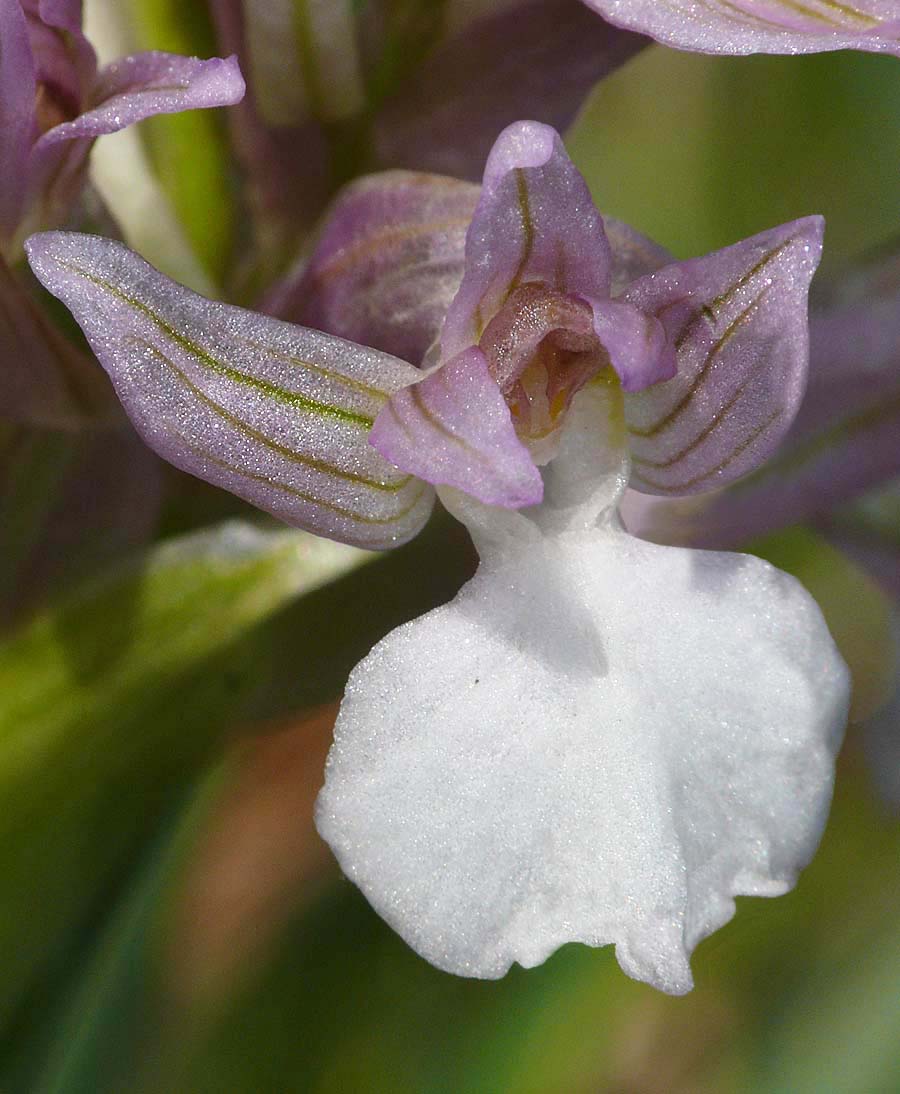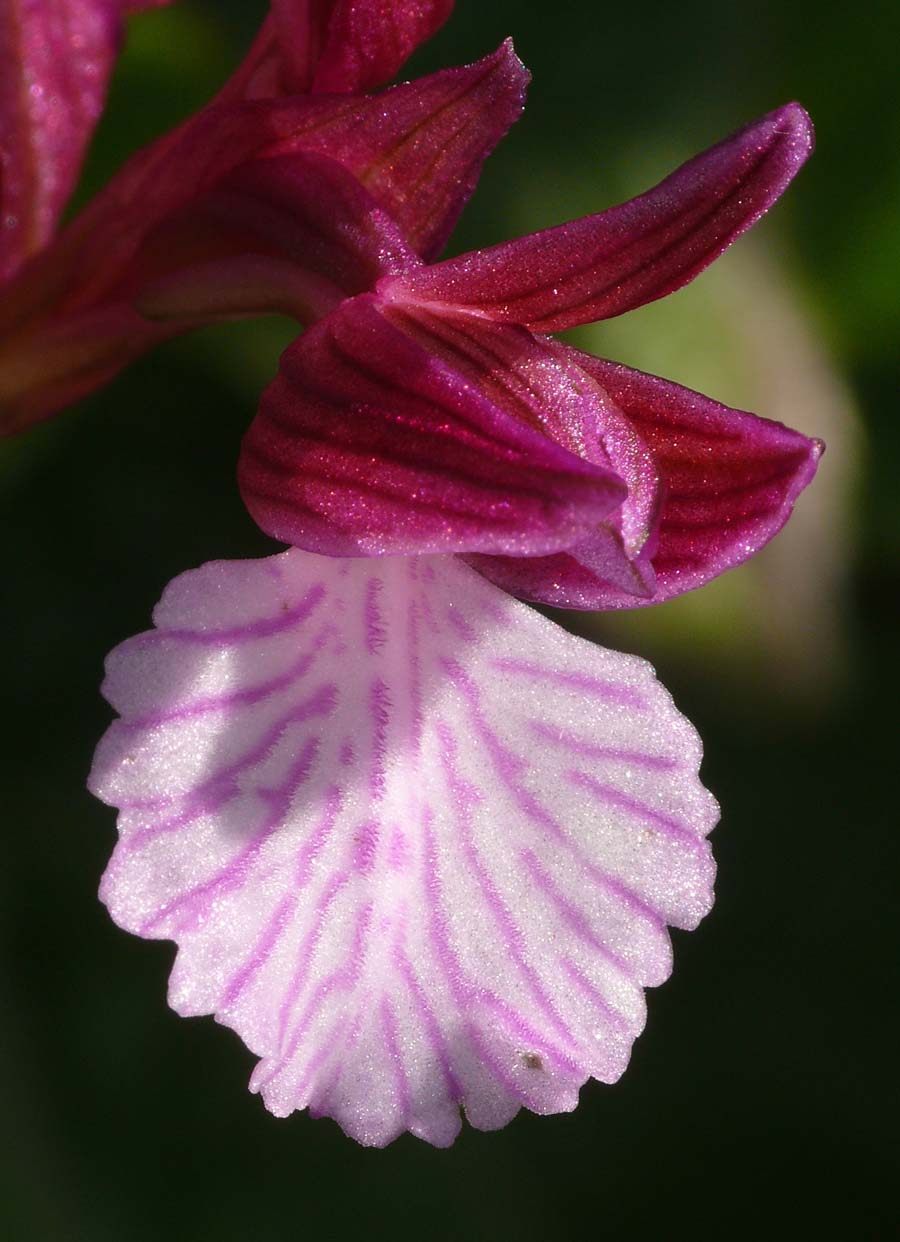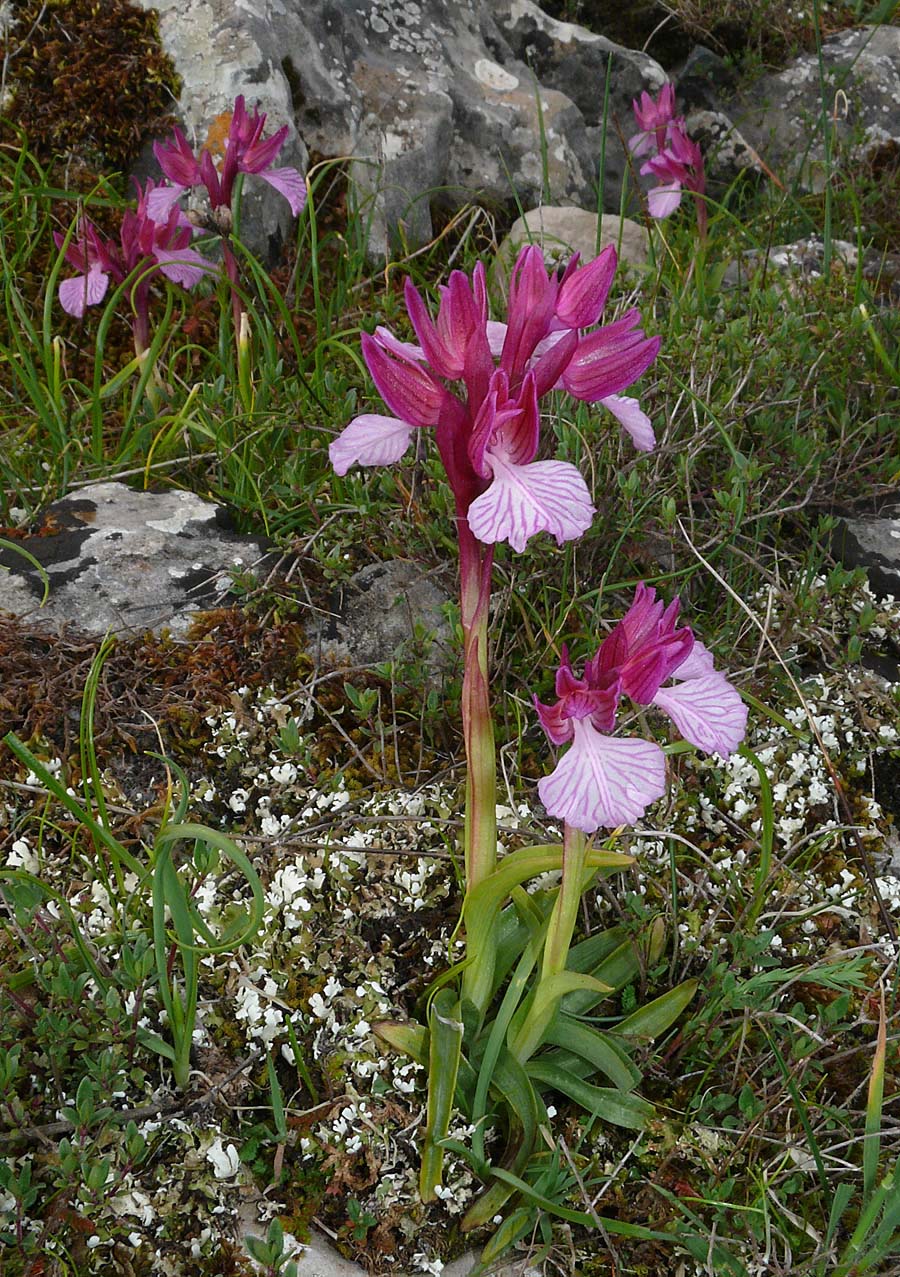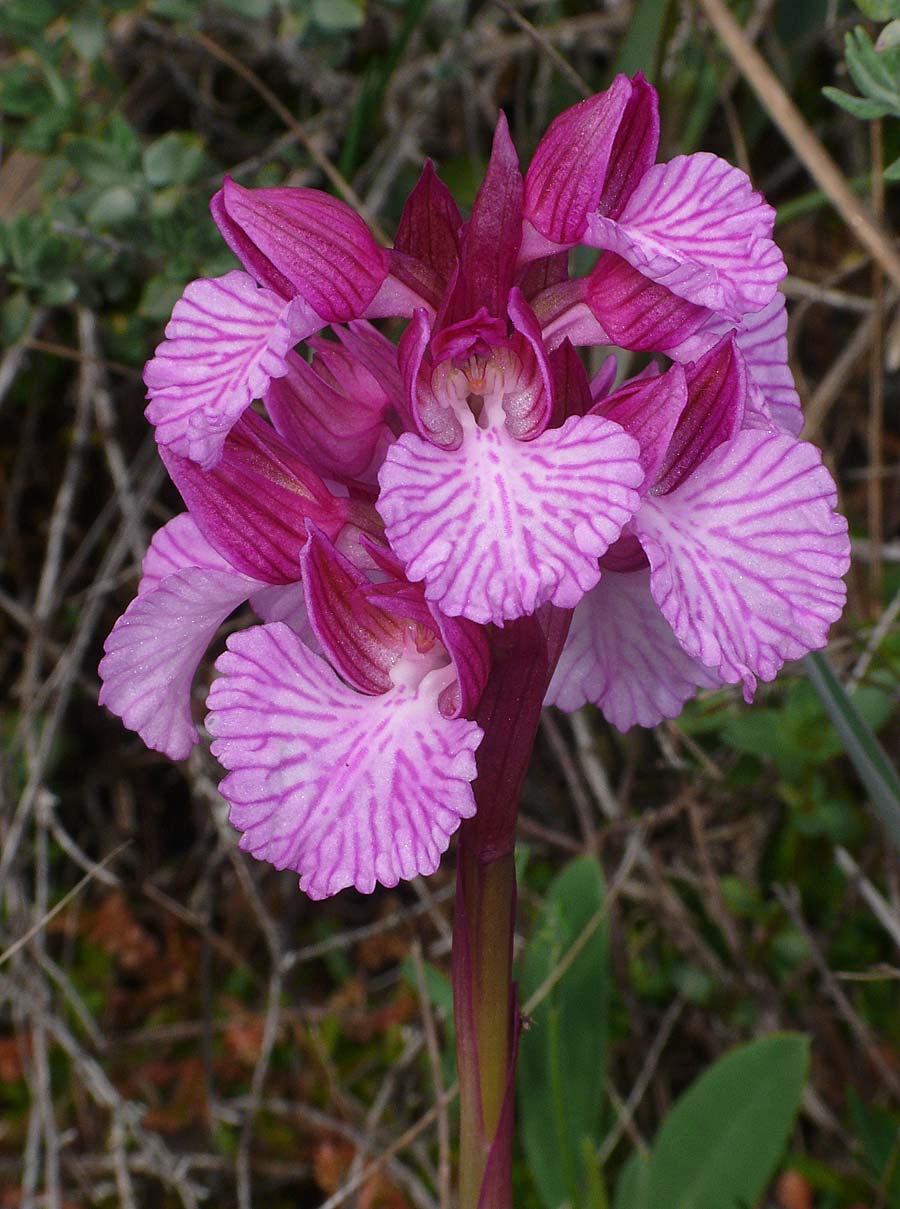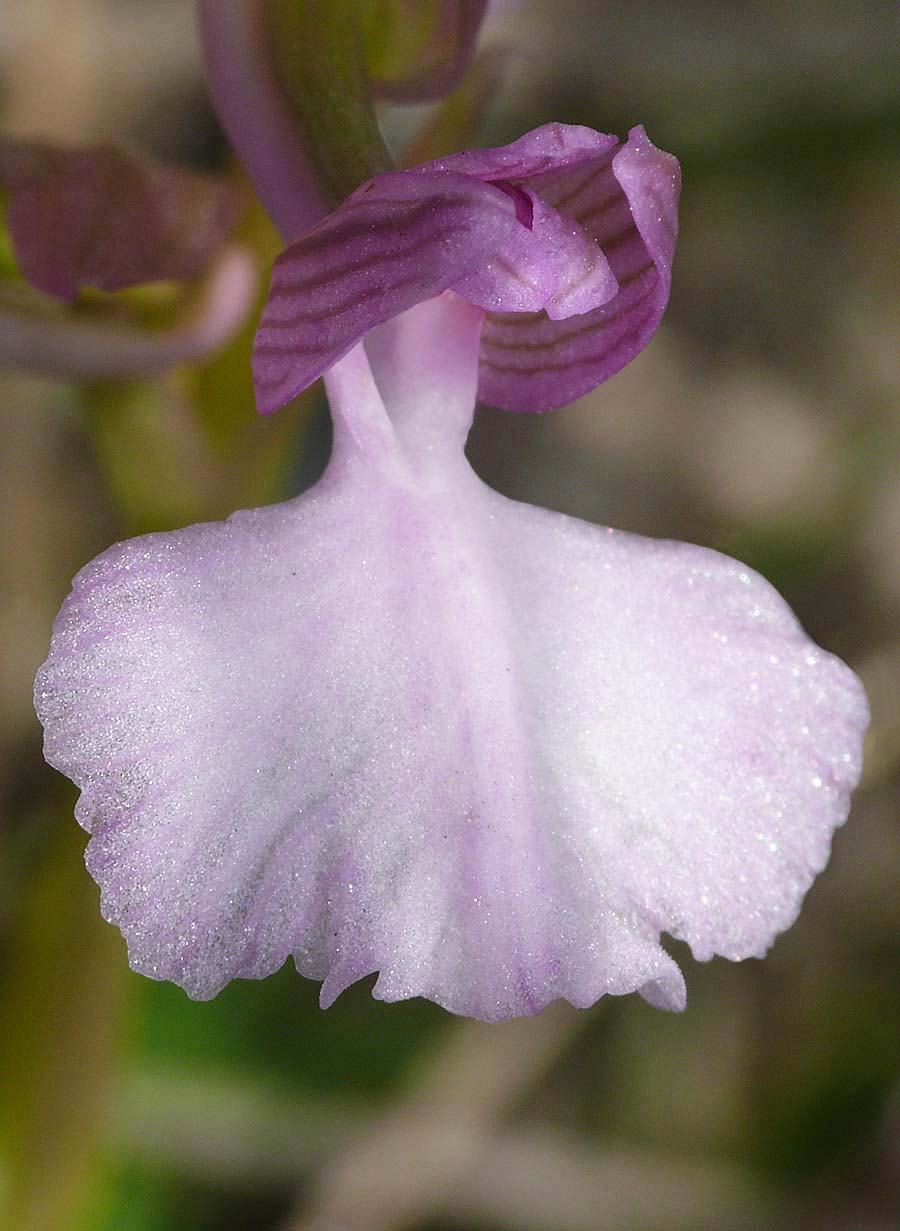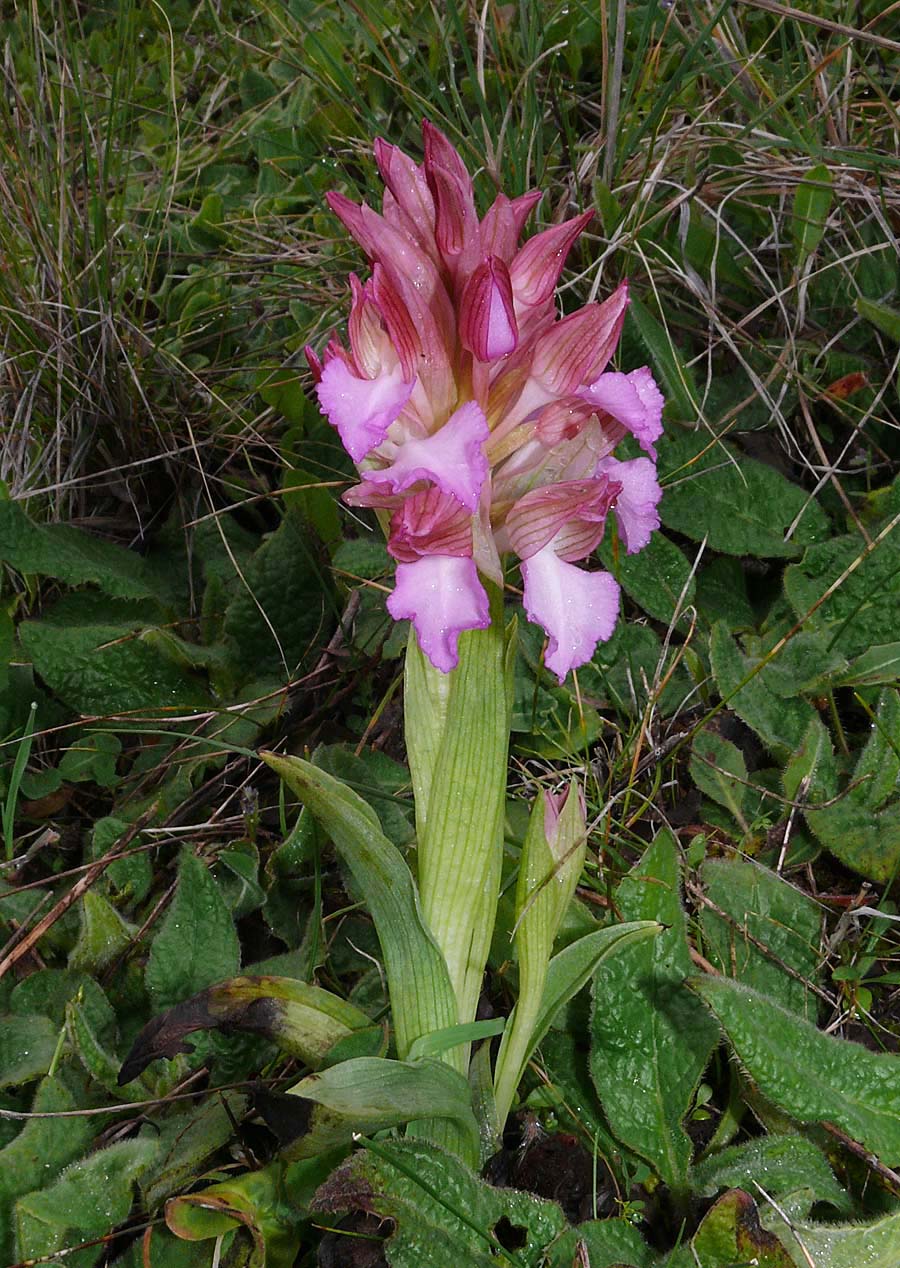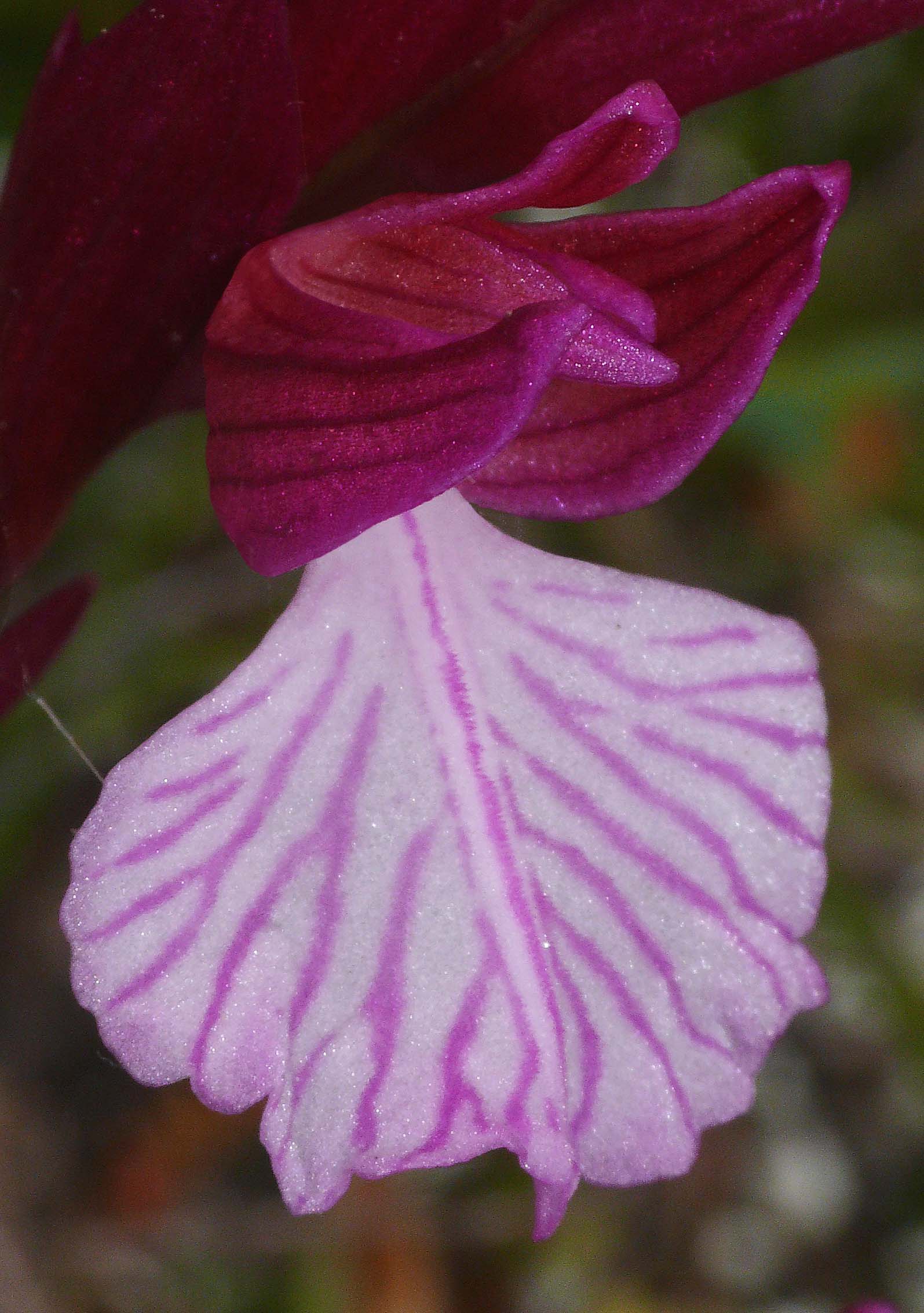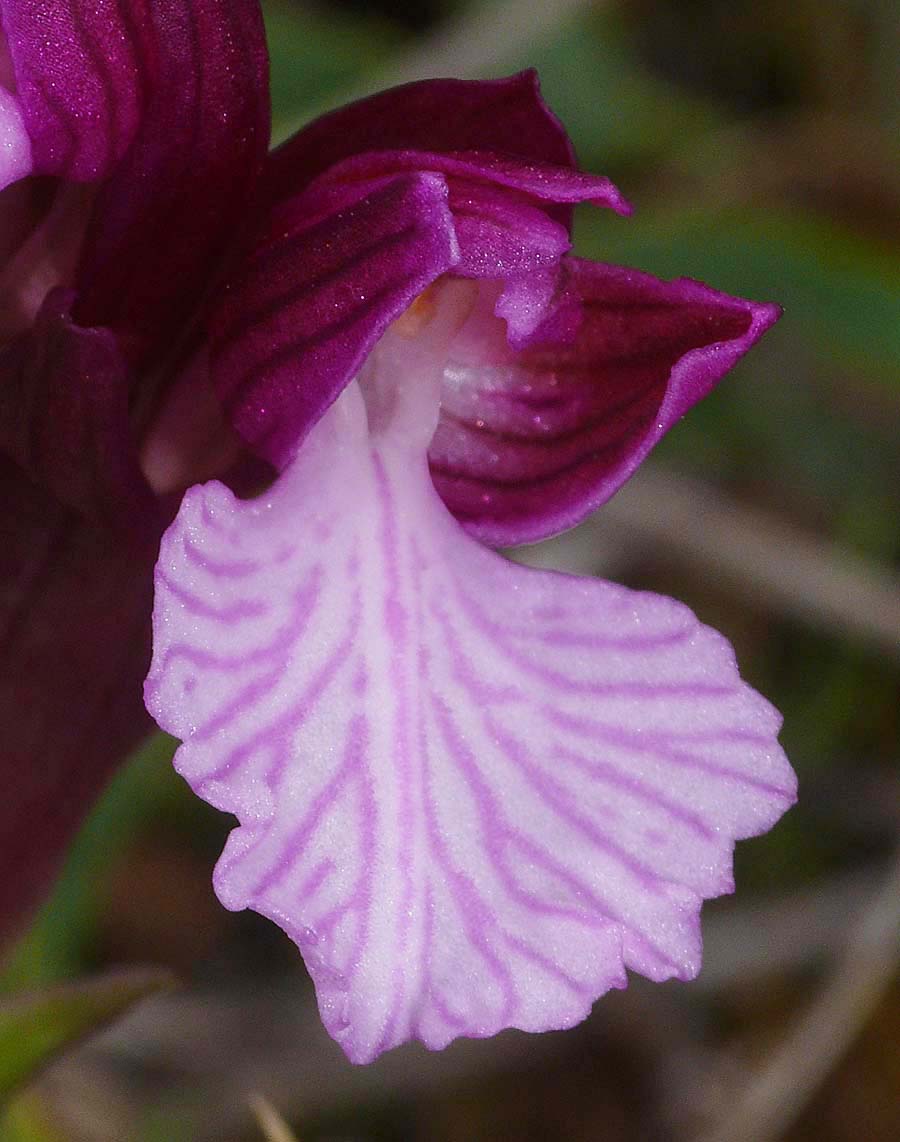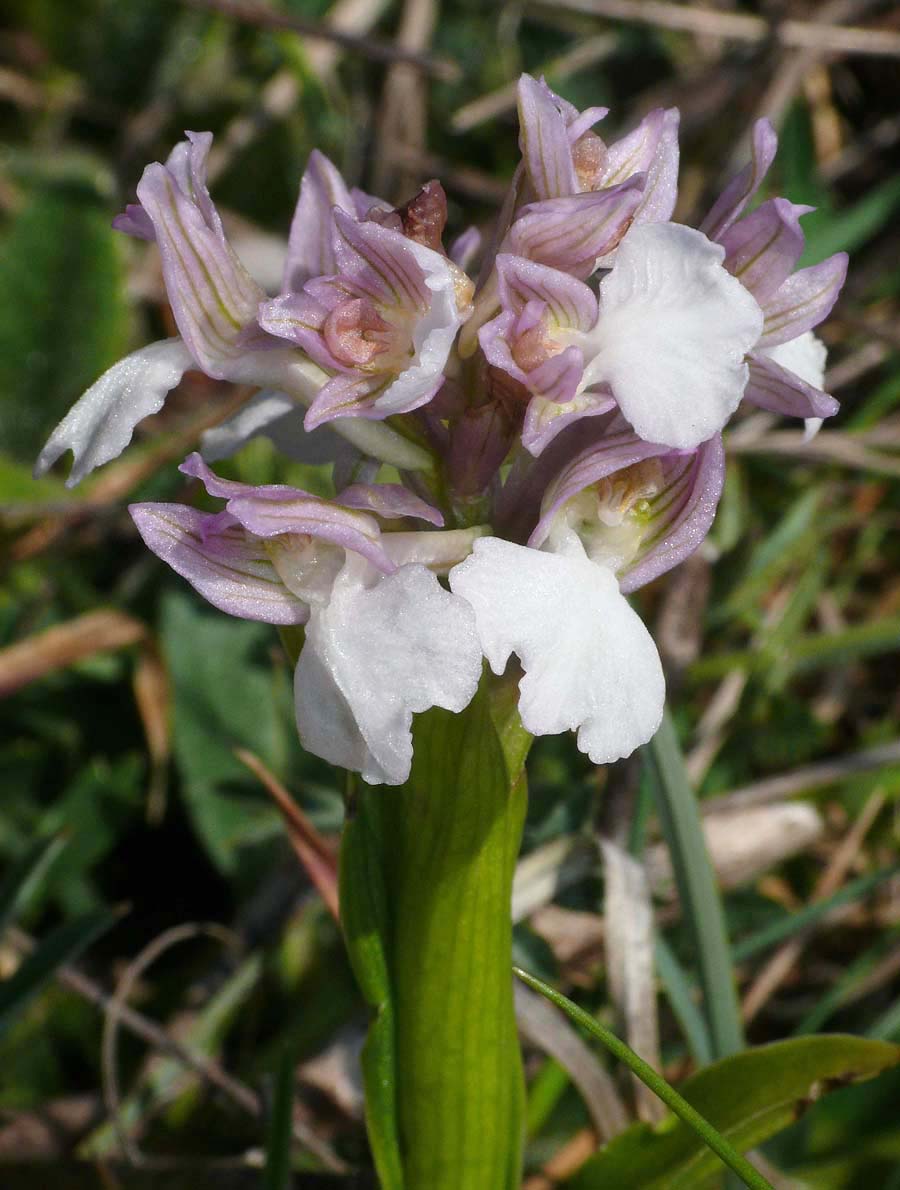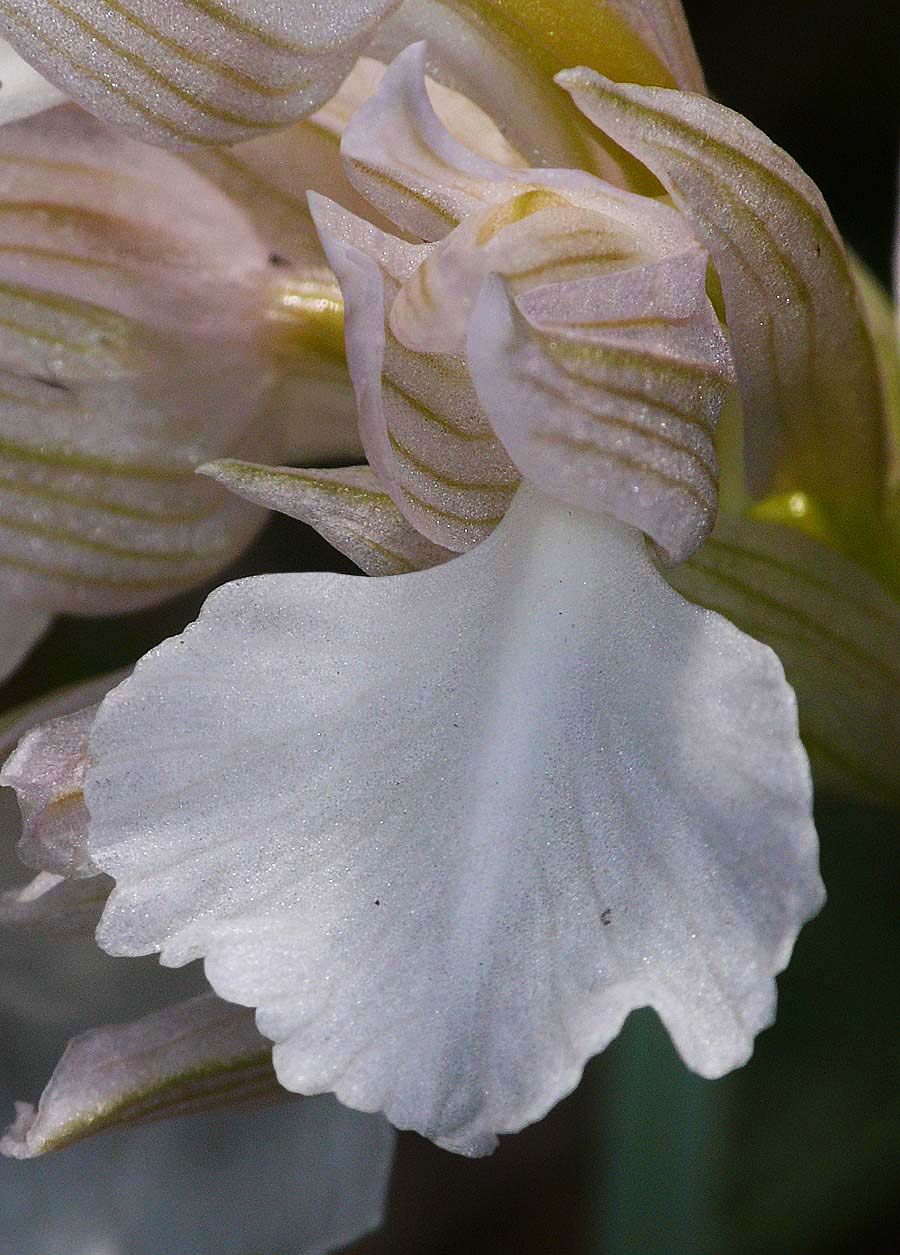The A. papilionacea group consists
of just two species, A. papilionacea itself, commonly known as the Pink Butterfly Orchid and the Fan Lipped Orchid, A. collina. The former is
a polymorphic species with a wide distribution and these factors
unsurprisingly give rise to a significant range of natural and
regional variations. First described by Linnaeus as long ago as 1759, the taxon has been intensely studied ever since,
leading to the recognition of many forms and the creation of a list of synonyms far too
extensive to detail in these pages (no less than 67 in 2013). A genetic study in 1993, comparing subspecies grandiflora, papilionacea and aegaea (then heroica)
from around the Mediterranean, determined that the minimal genetic
difference's discovered, were
consistent with nothing more than separate geographic populations within a single
cohesive gene
pool and that being simple morphs, sub-species status could
not be justified. These results were not universally accepted and new
taxa continue to emerge.
A. papilionacea var. vexillifera was first described from Sardinia by Terraciano in 1910 and its range is largely confined to Sardinia and Corsica, although there
are reports from mainland Italy and also Sicily. This form is very
similar to A. papilionacea subsp. grandiflora
and their ranges do marginally overlap. Separation where they
do associate can be difficult as both variants exhibit similar lip
marking and forward pointing, darker coloured perianth with a broad
shouldered, enlarged lip. Its really only the larger size of grandiflora that is the obvious differentiator.
As can be seen from the illustrations, colouration and markings in vexillifera can be extremely varied, ranging from the typical striated papilionacea pink, through lilac to completely unmarked white. It has a lengthy flowering period which can commence as early as January, right through to May at higher altitudes. The pictures here are from Sardinia where it appears to be the dominant variant.
